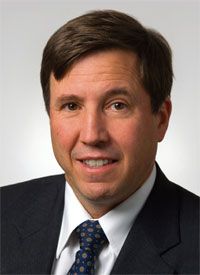Publication
Article
Special Issues
Doing No Harm Starts With Good Hazardous Drug Management
Author(s):
Oncologists in private offices who supply chemotherapy and biologic infusion therapies for their patients have until recently been exempt from regulations that protect the workplace from aerosolized contaminating agents.
Andrew L. Pecora, MD, editor in chief,John Theurer Cancer Center at Hackensack Meridian Health

Andrew L. Pecora, MD
The first order of duty for any physician is to do no harm. It is expected and accepted that despite all that medical science and physician skills can do, some patients won’t get better and will eventually succumb to their illness. Nearly all physicians expend Herculean efforts to save their patients from disease; however, no physician, no matter how wellintentioned, should knowingly harm a patient. This dictum is about to play out in another domain.
Oncologists in private offices who supply chemotherapy and biologic infusion therapies for their patients have until recently been exempt from regulations that protect the workplace from aerosolized contaminating agents. International standards—including US Pharmacopeia (USP) General Chapter <800>—are now considered mandatory for practices where chemotherapy and biologic agents are mixed under hoods. The list of requirements includes venting to the outdoors, a negative-pressure room to safely transfer contaminated air properly, cleanable walls and shelving, an anteroom to avoid general contamination, and separate storage for hazardous and nonhazardous drugs.
In 2014, USP proposed these and other rules to protect healthcare workers and patients from exposure to antineoplastic and other hazardous drugs and avoid the development of infertility and cancer. The FDA, CMS, and the Occupational Safety and Health Administration intend to enforce USP <800> and, in many states, the draft rules are becoming law. The structural changes entail potentially significant architectural and design planning. This, along with construction costs and disruption to clinical operations, could lead to a significant burden for some practices. The concern is that so many practices are on shaky financial footing that this added economic and logistical cost could tip them into insolvency. This could adversely affect patient choice and access as more and more small practices close their doors, particularly in rural areas.
Pharmacy consultant Willis Triplett, PharmD, told Oncology Business ManagementTM that USP <800> is unnecessary and needlessly burdensome. He noted that a number of states, such as New Jersey, have already incorporated versions of the guidelines into their laws, which could expose noncompliant practices to tough penalties. He called the New Jersey statute, which became law this year but has not yet gone into effect, “an abomination.” California has a similar law, with its regulations still being written. Yet other states, including Indiana, Kentucky, Oklahoma, and Texas, are moving against wholesale adoption of USP <800> for practices and may adopt less-stringent versions of the rules, Triplett said.
Our story on USP <800> this month describes these issues in more detail, including a potential delay of implementation until 2019. Many practices are taking a wait-and-see approach. It is expected that some regulation will take hold because of the risk to staff and patients. It is also unclear—even if regulations are put in place—what the penalties and level of compliance monitoring will be. With all this uncertainty, many oncologists are unsure what to do. First do no harm. That is our rule of conduct. I believe that oncologists, particularly those in community practice, will do what they need to do, and that is to figure it out. There is always room for discussion with regulators, and if the objective is met—no one is exposed to workplace toxins— avoiding excessive cost may be possible.








%20u.jpg?fit=crop&auto=format)

